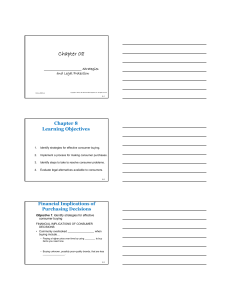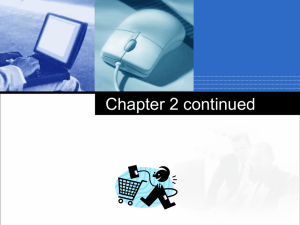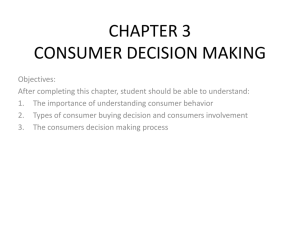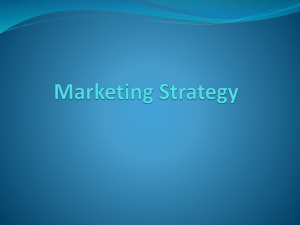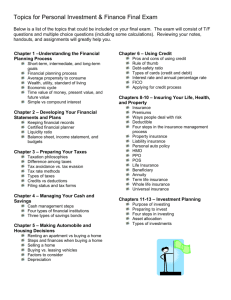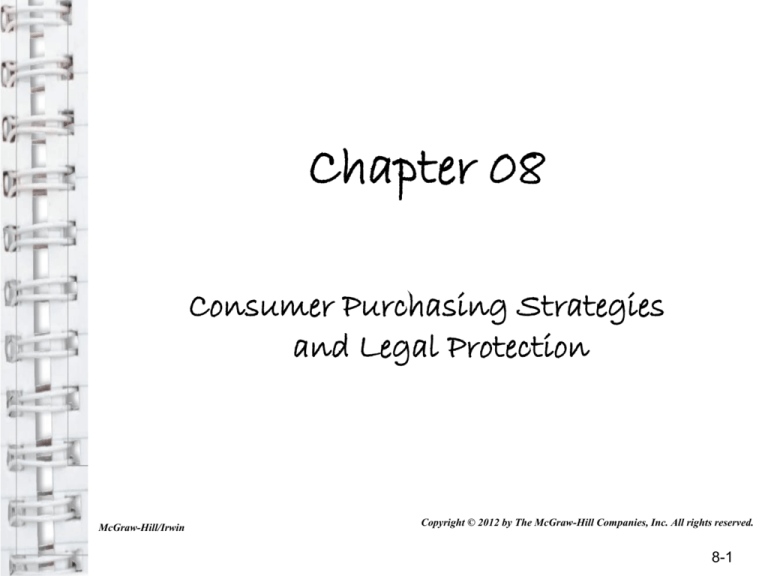
Chapter 08
Consumer Purchasing Strategies
and Legal Protection
McGraw-Hill/Irwin
Copyright © 2012 by The McGraw-Hill Companies, Inc. All rights reserved.
8-1
Chapter 8
Learning Objectives
1.
Identify strategies for effective consumer buying.
2.
Implement a process for making consumer purchases.
3.
Identify steps to take to resolve consumer problems.
4.
Evaluate legal alternatives available to consumers.
8-2
Financial Implications of
Purchasing Decisions
Objective 1: Identify strategies for effective
consumer buying
FINANCIAL IMPLICATIONS OF CONSUMER
DECISIONS
• Commonly overlooked trade-offs when buying
include…
– Paying a higher price over time by using credit to buy items
you need now.
– Buying unknown, possibly poor-quality brands, that are less
expensive.
8-3
Financial Implications of
Purchasing Decisions
• Commonly overlooked trade-offs when buying
include… (continued)
– Selecting brands that may be difficult to service
or repair.
– Ordering by mail or online to save time and
money, but return or repair may be difficult.
– Taking time and effort to comparison shop.
8-4
Factors of Consumer Purchases
Social Factors
Economic Factors
Consumer prices
Interest rates
Lifestyle
Culture
Supply/demand
Brand name
Warranty
Product Quality
Attitudes
Ads
Media/Internet
Hobbies
Consumer
Buying
Influences
Tax rates
Govt. regs.
Peer
group
Personal Factors
Sex and age
Marital status
Occupation
Income
Education
Family size
Housing type
Ethnic group
Religion
8-5
Financial Implications of
Purchasing Decisions
PRACTICAL PURCHASING STRATEGIES
Timing purchases
– Be aware if the price varies with the time of the year
Store selection
– Choice of retailer depends on location,
price, product
– Cooperatives -non-profit organization;
members save money
8-6
Financial Implications of
Purchasing Decisions
PRACTICAL PURCHASING STRATEGIES (continued)
Brand Comparison
Comparison shopping of store and national brands;
avoid impulse buying (unplanned purchasing)
Label information
Look for information on label and open dating
8-7
Practical Purchasing
Strategies
• Price comparison
– Unit pricing provides a standard of measurement
– Coupons (online: coolsavings.com; centsoff.com;
couponsurfer.com) and rebates (partial refund)
– Convenience & ready-to-use products may mean
higher prices. Large is not always the best buy,
and “Sale” prices vary among stores
8-8
Practical Purchasing
Strategies
• Evaluate warranties
– Full or limited express warranties, usually written.
– Warranty of Title-the right to sell the product
– Implied warranty of merchantability-fit for normal
use
• Service contracts -also called extended “warranties”
8-9
Major Consumer Purchases:
Buying Motor Vehicles
-The Process
8-10
Major Consumer Purchases:
Buying Motor Vehicles
Objective2: Implement a process for making
consumer purchases
Phase 1: Pre-shopping Activities
Problem identification
Information gathering
–
–
–
–
Personal contacts
Business Organizations
Media information-television, Websites
Independent testing organizations- Consumer
Reports
– Government agencies.
– Online Sources – http://www.edmunds.com/,
http://www.caranddriver.com/,
http://www.autoweb.com/
8-11
Major Consumer Purchases: Buying
Motor Vehicles (continued)
Phase 2: Evaluation of Alternatives
• Comparison shopping
• Selecting vehicle options-convenience, appeal,
etc.
• Comparing used vehicles- www.carmax.com
www.americasautomall.com, www.carfax.com
8-12
Major Consumer Purchases: Buying
Motor Vehicles (continued)
Phase 2: Evaluation of Alternatives (continued)
• Leasing an automobile
– lower payments, smaller initial cash outlay
– no ownership in vehicle
– maximum # of miles/year; charged for extra miles
– know the capitalized cost of the lease, the money
factor, the monthly payment, number of payments,
and the residual value
8-13
Major Consumer Purchases:
Buying Motor Vehicles (continued)
Phase 3: Determining Purchase Price
• Negotiation for New and Used cars
– Know necessary information about the product
– Deal with a person of authority to give you a
lower price or additional features.
– Used-cars: Check newspaper ads, Kelly Blue
Book (www.kbb.com), www.edmunds.com
– New cars: Set-price dealers, car-buying
services
8-14
Major Consumer Purchases:
Buying Motor Vehicles (continued)
Phase 3: Determining Purchase Price (continued)
•
Compare financing alternatives
– Variety of lenders-some lenders may pre-approve you
– Avoid being upside-down or having negative equity in
your car
– Look for rebates or low-interest financing.
– Consider the APR, total finance charge.
• Check out www.bankrate.com
8-15
Major Consumer Purchases: Buying
Motor Vehicles (continued)
Phase 4: Post-purchase Activities
Lemon Laws
Automobile operation costs
Motor Vehicle Maintenance
Use the item correctly to have improved
performance and fewer repairs
Investigate, evaluate and negotiate a variety of
servicing options
Operation costs; fixed and variable expenses
Automobile servicing sources; dealers, service
stations, garages, Wal-Mart, etc
8-16
Resolving Consumer
Complaints
8-17
Legal Options for Consumers
Objective 4: Evaluate the legal alternatives
available to consumers
• Step 4: Take Legal Action
–
–
–
–
Small claims court
Class action suits
Using a lawyer
Other legal alternatives
• Legal aid society
• Prepaid legal services
– Personal Consumer Protection
• Follow common sense guidelines on dealing
with reputable companies, signing contracts,
exaggerated offers, credit vs. cash purchase
and rushing to get a deal
8-19

